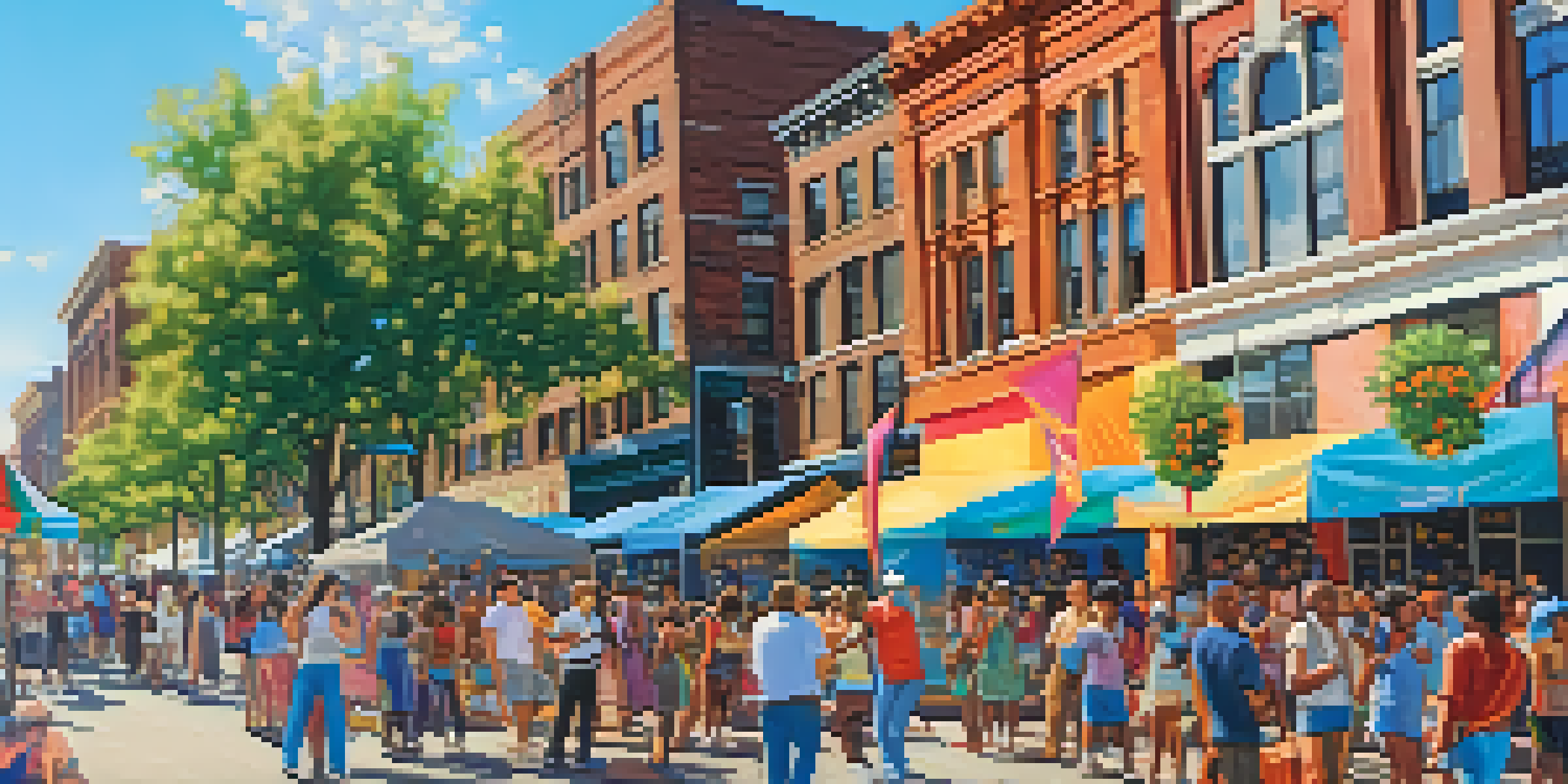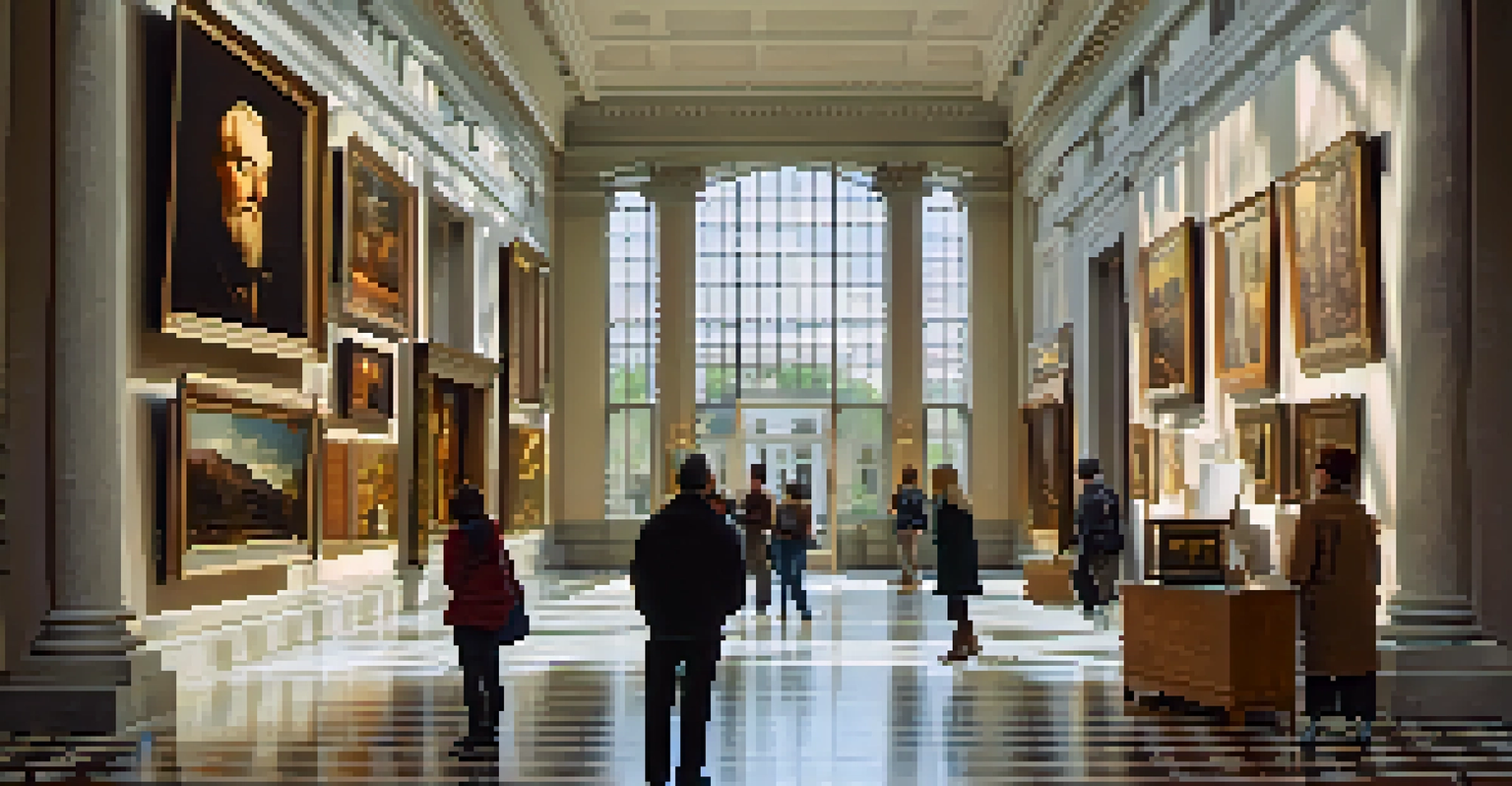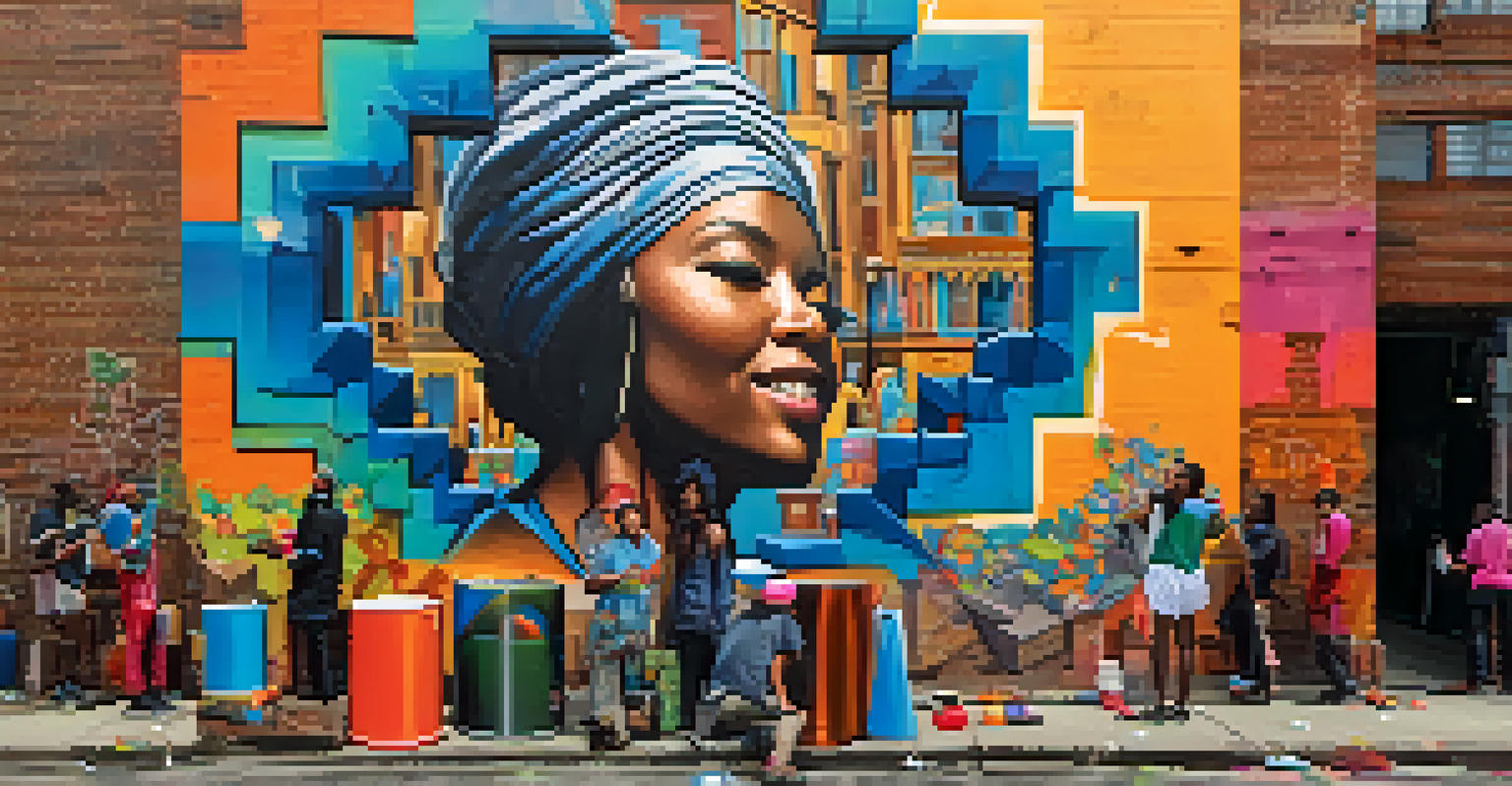The Future of Detroit's Cultural Institutions in a Changing World

The Resilience of Detroit's Cultural Scene
Detroit has always been a city of resilience, with its cultural institutions reflecting the heart and soul of its communities. From the Detroit Institute of Arts to the Motown Museum, these places have weathered economic storms and social upheaval. Their ability to adapt and thrive is a testament to the deep-rooted passion of the city's residents for their cultural heritage.
Art is the most beautiful of all lies; it is a lie that reveals the truth.
As we look to the future, this resilience will be tested further by changes in demographics and technology. More than ever, cultural institutions will need to engage with a diverse population and leverage digital platforms to reach broader audiences. This means not only preserving the past but also innovating for the future, ensuring that art and culture remain accessible to all.
In this context, we find a unique opportunity for collaboration between institutions and communities. By fostering partnerships that celebrate local artists and narratives, Detroit's cultural scene can continue to evolve, remaining relevant and vibrant in an ever-changing world.
The Role of Technology in Cultural Preservation
Technology is redefining how we experience art and culture, and Detroit's institutions are at the forefront of this transformation. Virtual reality tours, online exhibitions, and social media campaigns are just a few ways that museums and galleries are reaching new audiences. These tools not only enhance the visitor experience but also allow for greater accessibility for those who may not be able to visit in person.

Moreover, technology can play a crucial role in preserving cultural heritage. Digital archiving initiatives ensure that the rich history of Detroit's cultural institutions is documented and accessible for future generations. This is particularly important for communities whose stories may have been overlooked or marginalized in traditional narratives.
Resilience in Detroit's Culture
Detroit's cultural institutions showcase resilience by adapting to economic and technological changes while fostering community engagement.
As these institutions embrace technology, they also create spaces for dialogue and interaction. By inviting the public to participate in the creation and curation of content, cultural organizations can foster a sense of ownership and pride in the city's artistic legacy.
Engaging Diverse Communities through Programming
One of the most vital aspects of the future of Detroit's cultural institutions lies in their ability to engage diverse communities. Cultural programming that reflects the city's multifaceted identity can attract a wider audience and foster inclusivity. Events that celebrate various cultural traditions not only enrich the local landscape but also promote understanding and appreciation among different groups.
Culture is the widening of the mind and of the spirit.
Institutions like the Charles H. Wright Museum of African American History demonstrate the power of community-oriented programming. By offering workshops, lectures, and performances that resonate with local audiences, they create a sense of belonging and relevance. This approach can help transform these institutions into vibrant community hubs, rather than just places to observe art.
Furthermore, collaboration with local artists, schools, and organizations can enhance programming efforts. By seeking input from the community, cultural institutions can ensure that their offerings are meaningful and reflective of the people they serve.
The Impact of Economic Changes on Cultural Funding
Economic shifts have a significant impact on the funding and sustainability of cultural institutions. In a city like Detroit, where the economic landscape is continually evolving, securing financial support can be a challenge. Many organizations rely on a mix of public funding, private donations, and ticket sales, making them vulnerable to economic downturns.
As traditional funding sources fluctuate, institutions must explore innovative fundraising strategies. Crowdfunding campaigns, membership programs, and corporate partnerships can help bridge the gap. Additionally, engaging with the community for support can foster a sense of shared investment in these cultural treasures.
Technology Enhances Accessibility
Embracing technology allows Detroit's cultural organizations to reach broader audiences and preserve cultural heritage through innovative methods.
Finally, understanding the economic landscape can lead to proactive measures. By staying informed about grant opportunities and collaborating on regional initiatives, Detroit's cultural institutions can better navigate financial challenges and continue to thrive.
The Importance of Inclusivity in Cultural Spaces
Inclusivity goes beyond diverse programming; it's about creating welcoming environments for everyone. As Detroit's cultural institutions evolve, they must prioritize accessibility in both physical spaces and programming. This means ensuring that facilities are equipped for individuals with disabilities and that events cater to various cultural backgrounds and languages.
Moreover, inclusivity involves actively engaging marginalized communities in the decision-making process. By inviting diverse voices to participate in leadership roles, institutions can create policies and practices that reflect the needs and desires of the broader community. This collaborative approach can lead to richer and more meaningful cultural experiences.
Ultimately, fostering inclusivity is not just a goal; it’s a responsibility. By creating spaces where all voices are heard and celebrated, Detroit's cultural institutions can become beacons of hope and unity in a world that often feels divided.
The Future of Art Education in Detroit
Art education plays a crucial role in nurturing the next generation of artists and cultural leaders in Detroit. As cultural institutions adapt to changing needs, innovative educational programs must be prioritized. This might include partnerships with local schools or community centers to provide art classes and workshops that inspire creativity and critical thinking.
Interactive learning experiences can also enhance engagement. By incorporating technology and hands-on activities, cultural institutions can make art education more accessible and enjoyable for young learners. This could foster a lifelong appreciation for the arts and encourage future involvement in the cultural sector.
Inclusivity Drives Cultural Growth
Prioritizing inclusivity in programming and decision-making enriches Detroit's cultural landscape and ensures diverse community representation.
Ultimately, investing in art education is an investment in the future of Detroit itself. As young people explore their creative potential, they not only enrich their own lives but also contribute to the vibrancy and diversity of the city's cultural landscape.
Building Partnerships for Cultural Growth
Collaboration is key to the future of Detroit's cultural institutions. By forming partnerships with other organizations, businesses, and community groups, these institutions can expand their reach and resources. Collaborative efforts can lead to innovative programming, shared funding opportunities, and enhanced visibility for all parties involved.
For example, joint events between museums and local artists can showcase the city's talent while attracting diverse audiences. By pooling resources and ideas, these partnerships can create a more dynamic cultural environment that benefits everyone. This spirit of collaboration can foster a sense of community ownership over the city's cultural assets.

Furthermore, partnerships can also help cultural institutions navigate challenges more effectively. By working together, organizations can share best practices, learn from one another, and ultimately strengthen the cultural fabric of Detroit.